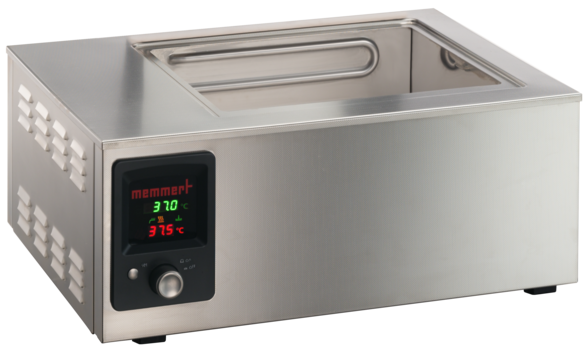In a laboratory setting, precise tools are an essential part of daily testing and work activity. Lab water baths serve an important role in lad research in the fields of reproductive science, vaccines, protein purification, DNA extraction, and more. Many lab baths are also highly specialized in the features and services they offer and are designed for highly specific use cases.
Table of Contents
Water Baths Defined
A water bath is designed to make use of heated water for the thawing of laboratory seminarians for testing and procedures. A key trait of a lab water bath is that the heated water used as a thawing agent is kept at a consistent and precise temperature. This temperature setting can be set exactly, via digital settings. Water baths are useful not just for their uniform heating ability but also for thawing materials that are flammable and in which other thawing methods could be dangerous. A water bath is generally designed for thawing up to 99.9 degrees with anything beyond that temperature requiring a different heating or thawing method.
The Need For Proper Thawing
When using thawing waterbaths you have to ensure that your sample is thawed out properly. The common methodology is to three to five minutes based on a sample size of 1.0 mL with adjustments made based on your sample size. When thawing, you need to thaw your sample out completely while also ensuring it doesn’t stay in the thawing bath for too long. Improper (or incomplete) thawing can damage your samples, resulting in incorrect or inaccurate values when tested. Once a sample is thawed, it should be removed and properly mixed before the next step in the procedure.
Water Bath Functions
Water baths can be used for thawing, heating, or encouraging the growth of cell cultures through a controlled warm environment. Water baths can also be used in experimental settings when a precise temperature is needed to ensure the correct chemical reaction. Specialized water baths with installed shakers can also be used as mixers to blend chemicals together once they have been properly thawed or heated. Also, water baths do not necessarily have to make use of water. Other fluids can be used if a specific thickness or chemical property is required. However, careful precaution should always be taken if a non-water substance is used and could produce other issues.
Other Considerations and Safe Usage
When using a water bath proper and safe operation is a key consideration. These general tips can help improve your results and ensure safe operation.
- Chemicals or reactions that are sensitive to moisture should not be heated in a water bath.
- Always check your water levels.
- Keep your water bath away from any flammable materials or possible fuel sources.
- Make sure your labels and markers are water-resistant on any samples you are heating or thawing.
- Never heat a substance beyond its flash point.
- When using your water bath always be sure to use distilled water to prevent damaging salt deposits.
- Like other pieces of equipment that make use of moisture unwanted bacteria and organism growth can be an issue. The use of disinfectants can prevent unwanted growths, such as molds.
- Regular decontamination should be done weekly by running the water bath at a temperature of at least 90 degrees Celsius.
- If the liquid in your water bath produces fumes proper ventilation and/or a fume hood can increase overall safety.
Final Thoughts
Laboratory work is highly precise and detailed. Like many other hands-on professions, you need the right tools to do the job. When you are dealing with highly fragile samples, even something as simple as thawing could damage your samples and therefore also damage the desired results. A lab water bath offers the predictability and carefully controlled environment you need to do your work effectively.
















